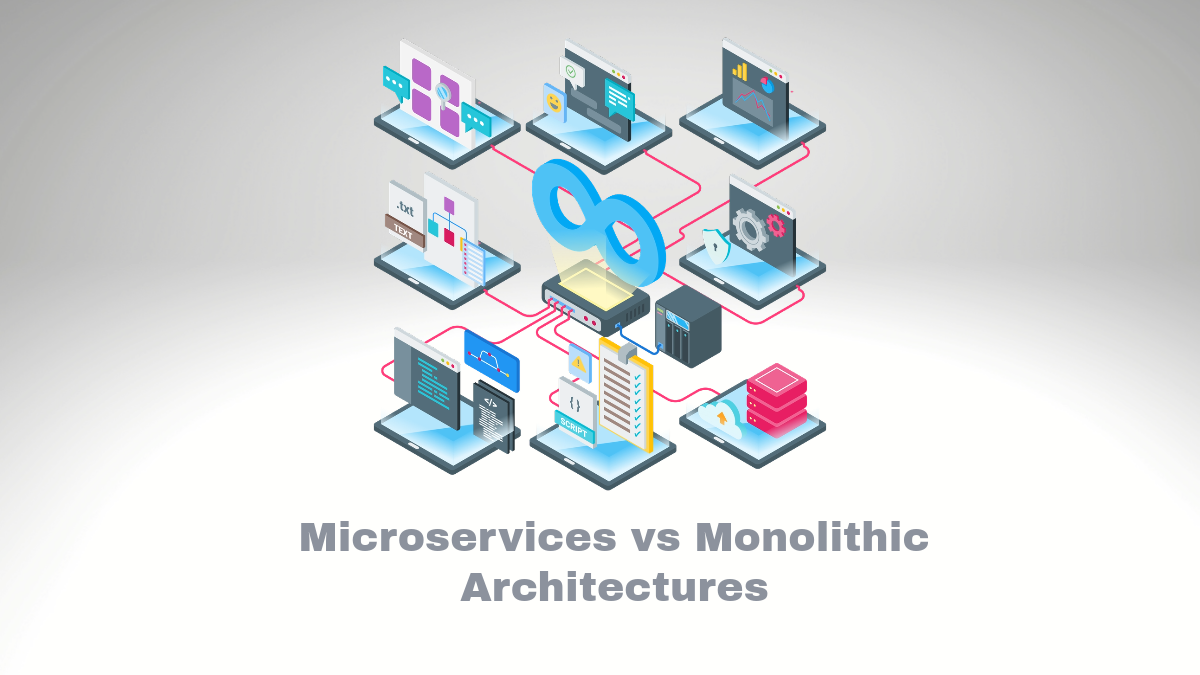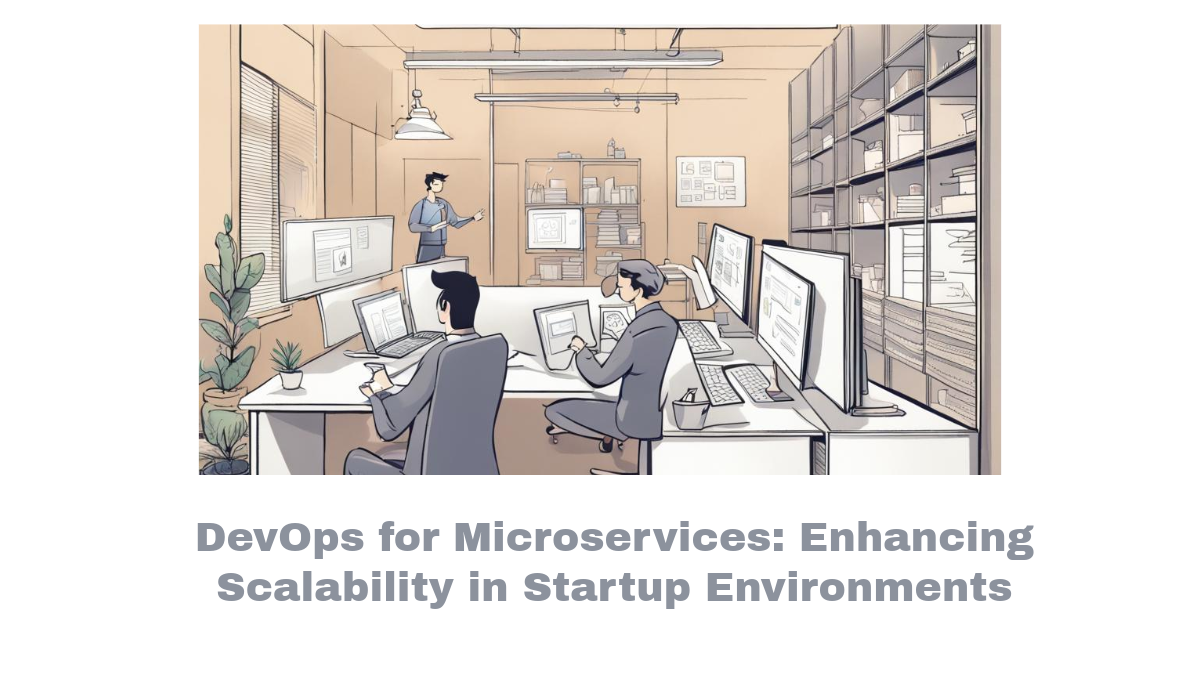Microservices vs Monolithic Architectures

In the ever-evolving world of software development, choosing the right architectural style can make or break your project. Do you opt for the venerable monolithic architecture, with its sturdy and unified structure? Or do you embrace the modern, flexible, and scalable approach of microservices? The choice is crucial but can seem daunting.
This article will delve deep into both types of architecture, comparing their structure, complexity, scalability, reliability, and ease of deployment. Using enlightening examples and expert insights, we will establish a clear understanding of these contrary design strategies’ advantages and challenges. Furthermore, we’ll discuss their suitability for large-scale applications – an aspect that often poses a significant concern.
As you navigate this guide and explore the contrasting realities of monolithic design versus microservice landscapes, remember that understanding these architectures isn’t merely theoretical knowledge for developers — it’s an essential skill in today’s digital-driven era. Continue reading to unravel simplification in software structural designs.
Understanding Microservices Architecture
In the realm of software development architecture, microservices have become a highly popular architectural style. They signify a special design approach, which works around developing an application as a set of small, self-contained modules or services. Each of these modules corresponds to different functionalities within the respective application and works independently.
Basic Concept and Features of Microservices Architecture
Microservices architecture proposes an application componentization process through distinctly functional services. Each service in this type of architecture encapsulates a specific capability and is built to function independently with its database and infrastructure.
Microservices are fundamentally designed on the principle of single responsibility, where each one must initiate one specific task. Inter-service communication happens through technologies like REST API or messaging queues— permitting them to interact effectively while preserving separation.
Such an architecture is highly decentralized in nature, which encourages the usage of different programming languages and data storage types across services based on project requirements. It also incorporates strategies to automate testing which ensures that the system functions correctly when new changes or updates are introduced.
Advantages of Using Microservices Architecture
Microservice architectures introduce several benefits that make it suitable for certain types of projects:
- Scalability: The ability to size up or resize components individually according to their own demand makes microservice architectures ideal for high-volume systems.
- Robustness: Since each service operates independently, any error in one service does not impact others directly – thereby enhancing overall system resilience.
- Independent deployment & flexibility: By segregating into smaller independent modules, parts can be updated and released individually without affecting other sections, making management easier.
- Technology diversity: Due its decentralized nature, microservices allow you to select technologies best suited for each service — bringing forth the advantage of using suitable technology stacks from multiple options.
These benefits equip developers with enhanced flexibility, ensuring successful software development and deployment.
Common Challenges in Implementing Microservices Architecture
The transition towards a microservice architecture is not without its challenges:
- Handling interservice communication: As the number of services increases, managing the communication between them gets challenging.
- Data consistency: Maintaining data consistency becomes harder as each service has its own independent database.
- Service replication: Duplication of services or business logic can happen in diverse development teams, which results in additional cost and effort.
- Operational complexity: Managing many independent modules can escalate operational complexities such as deployment strategy, fault detection and recovery.
It is, therefore, crucial to consider these challenges in advance to lay out an appropriate strategy for implementing a microservices architecture efficiently.
Understanding Monolithic Architecture
Before diving into the merits and demerits of monolithic architecture, it’s essential to grasp what it entails. In software development terms, this structure represents a traditional way of developing applications.
Basic Concept and Features of Monolithic Architecture
Monolithic architecture is characterized by its single-tiered design, where all components (user interface, server-side application logic, database interactions) are intertwined and managed as one system. This unified structure also means that an update or modification to the system requires revamping the entire application since all components are closely entwined.
- Single Codebase: A prominent feature of monolithic systems is their single codebase for functionalities.
- Unified Database: Unlike microservices, which may use multiple databases, monolithic architectures typically utilize a uniform database layer for data persistence.
- Consistent Programming Styles: Due to its unified nature, monolithic architectures often employ a single programming language and consistent coding style across the whole system.
Advantages of Using Monolithic Architecture
Despite being tagged ‘traditional,’ there are certain advantages that adorn the monolith’s crown:
- Simplified Development and Testing – With a unified codebase, building, testing, and debugging become streamlined because everything exists in one place.
- Easier Deployment – Since it’s developed as one unit, deploying a monolith is relatively straightforward than n deployments with many microservices.
- Performance Enhancement – Without any network latencies synonymous with interservice communication in microservices environments, a thoughtfully designed monolith can offer impressive performance.
Disadvantages or Challenges in Implementing Monolithic Architecture
While convenient in some respects, using a monolith also presents challenges hindering productivity:
- Limited Scalability – Scaling or updating just a small part of the application becomes complex because changes affect the entire application.
- Long Development Cycles – A single codebase also means longer development and deployment cycles as developers must navigate through a sea of complex, tightly coupled codes.
- Inflexibility – Since it’s built on a stack of specific technologies, monolithic architecture can also limit innovation or adaptation to new technologies.
Comparing Microservices Architecture and Monolithic Architecture
We will delve into microservices and monolithic architectures, exposing these paradigms’ inherent differences. This comparison thus enlightens your understanding, offering a well-rounded perspective of both architectural styles.
Differences in Structure and Complexity
In this segment, we’ll unwrap the divergences that set apart the structure and complexity of microservice and monolithic architectures. Borrowing from our guide, microservices architecture splits an application into numerous independent modules, while monolithic architecture ties all elements together as a unified entity. We shed ample light on each structure’s intricacies, discussing how their complexity might affect implementation.
Scalability: Microservices vs Monolithic
Scalability underscores an essential aspect of software development. Here, we contrast the scalability features inherent in microservices and monolith architectures. While focusing extensively on how effortless it is to scale applications in either architecture, we’ll also discuss potential hitches encountered during scaling processes.
Reliability and Fault Isolation: Microservices vs Monolithic
Software reliability often informs quality deployment practices. This segment accounts for how differently (or similarly) error propagation occurs under microservice and monolithic architectures. We shall explain fault isolation mechanisms within these frameworks—understanding whether a glitch could compromise an entire system or just confined portions.
Ease of Deployment: Comparing Both Architectures
Success in software development hinges greatly on seamless deployments. In this section, we scrutinize the deployment processes relevant to both architectural structures—looking at the simplicity or complexity involved when integrating changes or rolling out updates under either framework.
Suitability for Large Scale Applications
Lastly, our conversation turns toward which architecture—the microservice model or its monolithic counterpart—proves favorable for massive-scale application deployment. How feasible does each hold when managing intricate systems that support large-scale organizations or multi-faceted demands? A thorough explanation follows this question, helping you understand which architectural style could prove apt for your software development needs.
Conclusion
In conclusion, understanding the intricacies of Microservices and Monolithic Architectures helps navigate the complexities of software development, ensuring efficiency and productivity.
This article is your guide, shedding light on their structural differences, scalability, fault isolation, ease of deployment, and appropriacy for large-scale applications. The digital era demands us to be conversant with these architectural styles for successful software deployment.
As you continue to explore this expansive field, remember that ‘one size does not fit all.’ Choose the architecture that resonates with your project needs. Navigating the technological landscape is a continuous journey – so let’s keep decoding, learning, and choosing wisely!




Comments